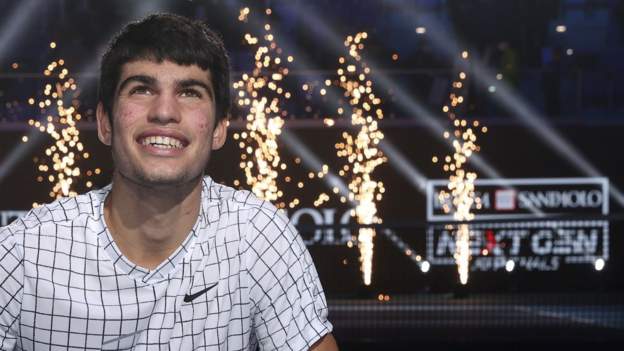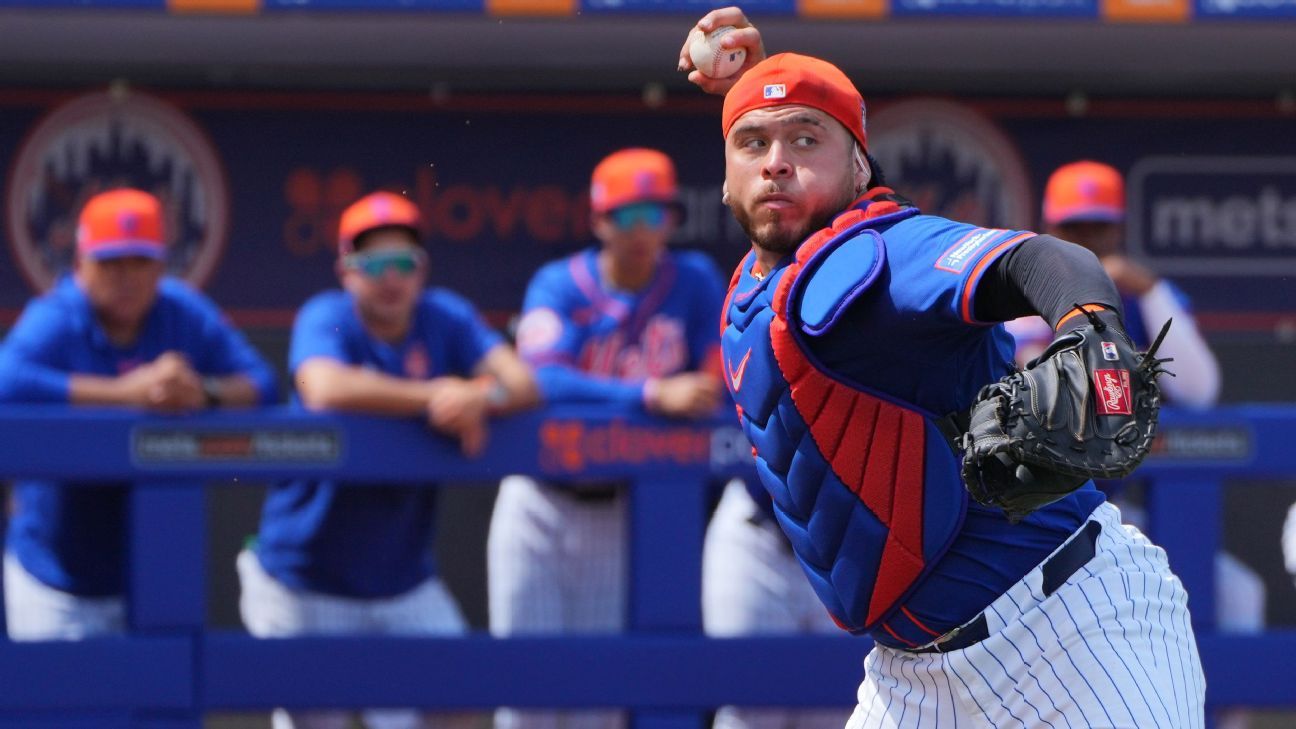
When Andy Murray speaks, the majority of the tennis world listens. And his anger towards Stefanos Tsitsipas for taking too long at the toilet during matches has seemingly contributed to a prospective rule change.
Timed toilet trips - ones which take less than it does for "American billionaire Jeff Bezos to fly into space", as Murray famously described Tsitsipas' bathroom break at the US Open - was one of the new rules implemented at last week's ATP Next Gen Finals.
Shorter warm-ups and courtside coaching were also trialled at the event, where eight of the world's best male players aged under 21 do battle across five sets - but where each set is won by the first player to win four games.
So as well as seeing the next wave of potential men's tennis stars, the Next Gen tournament offered the opportunity to see how the sport could look in the future.
"This event has always been about pushing the boundaries and trialling new ideas," tournament director Ross Hutchins said.
"Ultimately, we want to continue improving the experience for our fans."
Vote - which new rule would you most like to see introduced?
If you are viewing this page on the BBC News app please click here to vote.
Why are these rules being trialled?
Tennis chiefs, like all those operating professional sports, have long recognised the importance of evolving and attracting younger audiences in a competitive market.
Speeding up the pace of play, particularly by shortening 'dead' time before the match starts and between points, has been a focus of the ATP and WTA.
Other events like World Team Tennis, Tie Break Tens and Patrick Mouratoglou's Ultimate Tennis Showdown have also attempted radical changes around scoring, coaching and entertainment.
But the Next Gen Finals - launched in 2017 - has been the most visible stage for notable experimentation.
Several new rules were implemented at this year's event in Milan, where Spain's Carlos Alcaraz won the title on Saturday.
The unique format of the matches at this year's event did not change and remained first-to-four games in the best-of-five sets.
Other innovations from previous events also stayed: notably, a deciding point instead of deuce when a game gets to 40-40.
What has the reaction been? And could the rules be implemented on the main tours?
The players and coaches involved in Milan have seemed to be happy with the different rules, although American finalist Sebastian Korda acknowledged they were "tough" to get used to.
Playing sets of first-to-four games was initially "really difficult", added world number 41 Korda.
"You always have to concentrate and have to be ready to go," he said. "One break is a really big thing for the set and the momentum for the match."
Brandon Nakashima, another American who lost to Korda in the last four, spoke positively about having no-ad at deuce because it meant there were "a lot of crucial points" that needed an increased level of focus throughout.
Doubles matches on both tours have long used the system, which means games are clinched by a winning point at 40-40 instead of needing two clear points.
But there has not been any indication that it will be introduced to top-level singles events.
Nakashima conceded the one-minute warm-up was "a little bit tough", with Argentina's Juan Manuel Cerundolo agreeing it left players starting "a bit off rhythm".
Allowing coaching from the side of the court was also well received, with Italy's Lorenzo Musetti urging for interaction to be introduced on the main tour.
"I think it is a good solution. I like that and I will push to put that on the ATP Tour," he said.
On-court coaching, which has been in place on the WTA Tour since 2008, has been a divisive debate, though.
Many in the sport still believe players should have to problem-solve on court and adapt tactically independently.
The tightening of the rules around toilet breaks and medical timeouts, which have long been criticised for allowing some players to use them tactically, could be introduced on the men's tour for the 2022 season.
While shortening the length of sets on the main ATP and WTA Tours does not appear to be under consideration, some Next Gen innovations have already been implemented.
The electronic line-calling system used at this year's US Open - replacing line judges with the computerised technology - was first trialled at the 2017 finals.
The 25-second shot clock was another innovation which has since transferred to the senior events. Despite initial reservations expressed by Rafael Nadal among others, it has become an accepted rule which was used throughout last year's Wimbledon.
What about the fan experience?
Since taking over as ATP chairman last year, Andrea Gaudenzi has often stressed the importance of developing a "better fan experience" in the sport.
For those attending the Next Gen Finals, this translated into shorter matches, a vibrant atmosphere created by a live DJ and free movement for fans during the action.
Allowing spectators to wander around, and particularly not making latecomers wait outside the court until a changeover, was a "good move", according to former British player Arvind Parmar.
"Getting fans in at 1-0 has been a problem at regular events. Sometimes they have to wait 20-25 minutes for those three games," said Parmar, who was commentating on the event for Amazon Prime.
Those inside Milan's Allianz Cloud venue seemed to enjoy the experience, at least judging by the beaming smiles and dancing in the seats caught by the cameras.
And, like on court, the stands contained plenty of youthful faces - which is the aim for tennis as it attempts to stay relevant among future generations.















 Phone: (800) 737. 6040
Phone: (800) 737. 6040 Fax: (800) 825 5558
Fax: (800) 825 5558 Website:
Website:  Email:
Email: 






